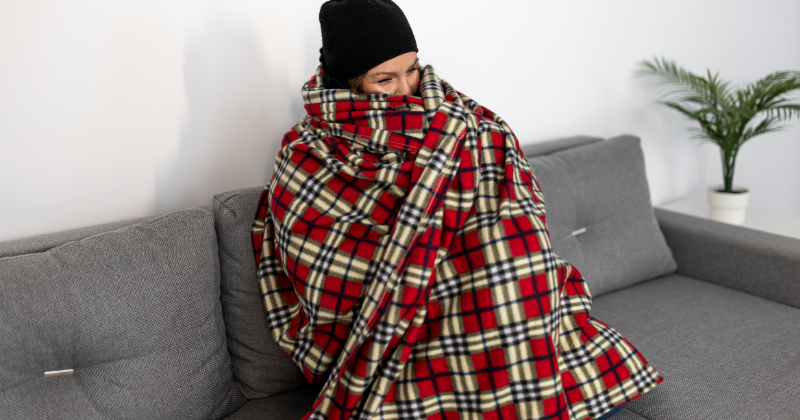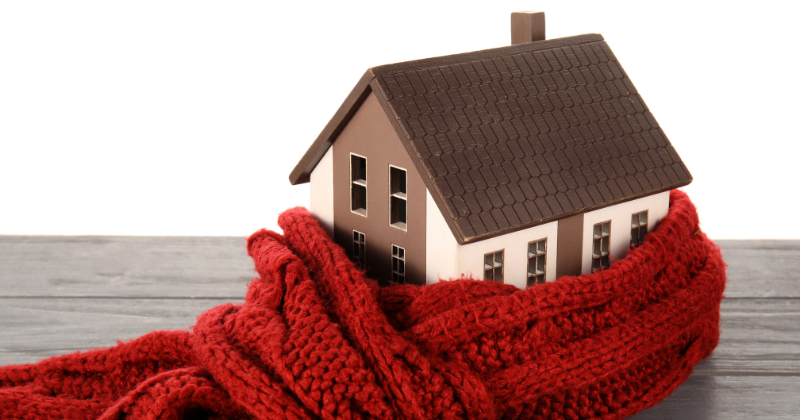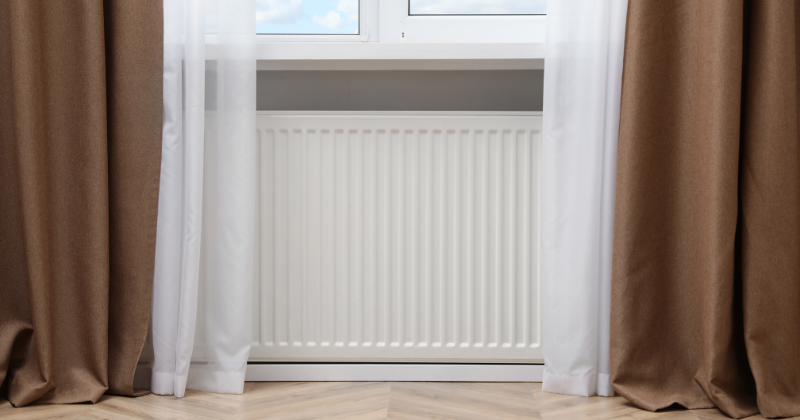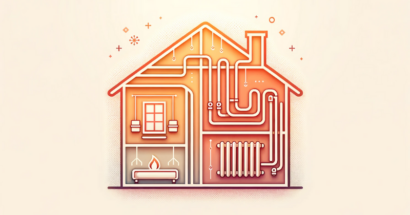As the chill of winter creeps into homes across the UK, many of us face the challenge of keeping warm without central heating. This might be because our homes are old or we’re looking for budget-friendly solutions. Identifying economical yet effective methods to ensure your living spaces remain warm during the cold months has become a common pursuit. The quest for affordable heating solutions that do not compromise on comfort is more relevant than ever.
Recognising the significance of staying snug throughout the winter is paramount, all while keeping an eye on our energy expenditures. The goal is to strike an optimal balance between cost efficiency and thermal comfort.
For individuals contemplating a long-term heating solution, consider the transition to electric radiators. This upgrade is not only an astute investment for enhancing your home’s energy efficiency but also plays a pivotal role in slashing your heating bills.
Incorporating energy-saving tips and leveraging alternative heating options can significantly mitigate the absence of central heating. From insulating your home to adopting portable heaters, each strategy contributes to a warmer environment without straining your finances.
By adhering to these guidelines, you can easily navigate the winter months, ensuring your home remains a warm haven despite the lack of central heating. Embrace these budget-friendly heating methods to enhance your living conditions and make an environmentally conscious choice that benefits your wellbeing and your wallet.

Challenges of No Central Heating in Household
Staying warm is not just about comfort. It’s also about health. Cold homes can lead to health problems like colds and more serious conditions. This makes it vital to keep your house warm during the cold seasons.
Here are some common challenges households with no central heating encounter:
- Higher Energy Costs: Homes without central heating often rely on less efficient heating methods. These can be more expensive in the long run. Portable heaters and Electric blankets are cheaper at first. Yet, they can add a lot to your energy bills over time.
- Uneven Heating: One room might be toasty, while another is chilly. This is a common issue in homes without central heating. It’s hard to keep the house warm evenly. Some areas stay cold, no matter what you do.
- Increased Maintenance: Using multiple heating devices requires more upkeep. Each heater, electric blanket, or other device needs regular checks. This can add to your list of chores.
- Safety Concerns: Portable heaters can be a fire risk if not used carefully. It’s important to follow safety guidelines to avoid accidents.
- Dampness and Mould: Some homes face dampness without consistent heating. This can lead to mould growth. It’s not just unsightly. It can also cause health issues.
- Struggle to keep the house warm in Extreme Cold: When the temperature drops, it becomes even harder to keep the house warm. Homes without central heating can struggle to maintain a comfortable temperature.

20 Alternative Cheap Heating Solutions
Finding ways to stay warm without central heating is a challenge many face. But it’s not impossible. There are plenty of cheap ways to heat your home that can keep you cosy without breaking the bank.
Let’s explore some effective and budget-friendly methods to keep the house warm. Each approach comes with its own set of short-term and long-term challenges. Yet, with the right Challenge, you can make your home a warm haven during winter.
1. Insulating Your Home
Insulation is key to keeping heat inside your home. Using curtains, draft excluders, and insulation materials can make a big difference. These methods prevent warm air from escaping and cold air from entering.
| Challenge | Short-Term Challenges | Long-Term Challenges |
| Curtains | Initial cost | Maintenance and cleaning |
| Draft Excluders | Installation effort | Wear and tear replacement |
| Insulation Materials | Upfront cost and installation | Periodic checks and updates |
2. DIY Solar Heaters
Solar heaters made from recycled materials can be a cost-effective way to generate warmth. This project uses black-painted soda cans in a glass-covered box to absorb and circulate solar heat.
| Challenge | Short-Term Challenges | Long-Term Challenges |
| Building | Gathering materials and assembly | Maintenance and efficiency over time |
3. Electric Blankets and Heated Throws
Personal heating devices like electric blankets and heated throws are great for staying warm. They offer direct warmth and can be more energy-efficient than heating an entire room.
| Challenge | Short-Term Challenges | Long-Term Challenges |
| Usage | Finding the right product | Electricity costs and product lifespan |
4. Portable Space Heaters
Electric and gas heaters can offer a quick fix to warm up a space when dealing with no central heating. Selecting the appropriate type for your needs and adhering to safety guidelines to mitigate any risks is crucial.
However, transitioning from portable heaters to electric radiators could be the next step for those seeking a more permanent and efficient heating solution.
Discover the benefits of making this switch by reading our detailed guide: 7 Reasons to Replace Your Portable Heater with an Electric Radiator.
| Challenge | Short-Term Challenges | Long-Term Challenges |
| Electric Heaters | High energy consumption can lead to increased utility bills. | Over time, the cost associated with their use can accumulate, making them an expensive option. |
| Gas Heaters | There are significant safety concerns to consider, including the risk of carbon monoxide poisoning. | Regular maintenance and securing a continuous fuel supply can add complexity and cost. |
5. Sealing Windows and Doors
Effective sealing can significantly reduce heat loss. This method involves checking for leaks and applying sealant or weatherstripping.
| Challenge | Short-Term Challenges | Long-Term Challenges |
| Sealing | Identifying leaks | Durability and need for reapplication |
6. Using Rugs and Carpets
Rugs and carpets can provide an immediate layer of insulation on your floors, helping to retain heat in a room. While this method can quickly fix cold floors, especially in homes with no central heating, it’s more of a stopgap measure than a long-term solution.
| Challenge | Short-Term Solutions | Long-Term Considerations |
| Installation | Easy to lay down in strategic areas. | Initial costs and the need for regular cleaning and maintenance can add up. |
| Wear and Maintenance | Regular vacuuming and spot cleaning. | Over time, rugs and carpets can wear down, requiring replacement or professional cleaning. |
7. Cooking to Heat: A Quick Fix
Utilising your oven and stove for warmth can make your kitchen and adjacent areas more comfortable. This method leverages the heat generated during cooking, providing a temporary reprieve from the cold.
| Challenge | Short-Term Solutions | Long-Term Considerations |
| Increased Energy Use | It is only practical while cooking meals. | Reliance on this method can lead to higher energy bills, making it unsustainable in the long run. |
| Balancing Needs | Provides warmth and hot meals simultaneously. | It is not a viable heating strategy for all areas of your home or when cooking is unnecessary. |
8. Thermal Curtains
Thermal curtains can effectively block drafts and insulate windows, keeping warm air in and cold air out. While beneficial, they serve more as a temporary enhancement to your home’s insulation rather than a comprehensive solution.
| Challenge | Short-Term Solutions | Long-Term Considerations |
| Installation | Relatively simple to hang. | The upfront cost, ongoing maintenance, and the need for eventual replacement can diminish their long-term appeal. |
| Maintenance and Effectiveness | Regular cleaning to maintain insulating properties. | Effectiveness can wane, requiring updates or replacements to ensure continued performance. |
9. Heating with Candles and Flower Pots
This creative method uses candles and terracotta pots to generate a small amount of warmth. While innovative, it’s only suitable for heating very small areas and poses safety risks, making it an impractical long-term heating solution.
| Challenge | Short-Term Challenges | Long-Term Challenges |
| Setup | Easy to assemble with household items. | Significant safety concerns and the limited heating area render this method unsustainable for broader home heating needs. |
10. Reverse Ceiling Fans
Setting ceiling fans to run in reverse can help circulate warm air trapped at the ceiling back into the room. While this can aid in distributing heat more evenly, it relies on having present warm air, making it a supplementary measure at best.
| Challenge | Short-Term Challenges | Long-Term Challenges |
| Adjustment | A simple switch to change fan direction. | Increased energy use without significantly impacting overall home warmth, |
11. Layering Clothes and Using Woolen Goods
Wearing multiple layers and utilising woollen blankets can significantly boost personal warmth at no energy cost. However, these measures are best seen as temporary fixes. They require frequent adjustments to indoor temperatures and entail additional laundry and maintenance efforts.
| Challenge | Short-Term Challenges | Long-Term Challenges |
| Layering Clothes | Adjusting to indoor temperatures | Managing laundry |
| Woollen Goods | Initial purchase cost | Care and maintenance |
12. Using Timers on Heaters
Timers can optimise heater use, reducing unnecessary energy consumption. While effective for managing heating in the short term, reliance on timers may not address the need for a more consistent and sustainable heating solution.
| Challenge | Short-Term Challenges | Long-Term Challenges |
| Timers | Learning to set timers effectively | Dependence on timing for warmth |
13. Water Bottle Hacks
Hot water bottles offer hours of warmth. This old-school method is a quick fix for cold nights but has limitations, including safety concerns and potential leaks.
| Challenge | Short-Term Challenges | Long-Term Challenges |
| Hot Water Bottles | Preparing bottles safely | Potential for leaks and maintenance |
14. Reflective Panels Behind Radiators
Reflective panels can temporarily enhance the efficiency of existing radiators by reflecting heat back into the room. However, their effectiveness may diminish, necessitating eventual replacement or alternative heating solutions.
| Challenge | Short-Term Challenges | Long-Term Challenges |
| Reflective Panels | Installation and setup | Effectiveness over time and need for replacement |
15. Maintaining Humidity Levels
Humidifiers can make indoor air feel warmer. This method temporarily alleviates the chill by retaining heat better. Yet, finding the right humidity balance and maintaining the device can be challenging over time.
| Challenge | Short-Term Challenges | Long-Term Challenges |
| Humidifiers | Finding the right balance of humidity | Maintenance and water usage |
16. Blocking Unused Chimneys
Sealing off unused chimneys can prevent heat loss, serving as a makeshift solution. However, ensuring proper ventilation and dealing with the installation can be cumbersome and not a definitive fix for heat retention.
| Challenge | Short-Term Challenges | Long-Term Challenges |
| Chimney Blocks | Installation | Ensuring proper ventilation |
17. Community Resources
While community resources for heating assistance provide temporary relief, navigating applications and dealing with variable availability can be daunting and not a permanent heating solution.
| Challenge | Short-Term Challenges | Long-Term Challenges |
| Assistance Programs | Navigating applications | Availability and eligibility |
18. Behavioural Adjustments
Simple behavioural changes, like closing unused rooms, offer immediate but temporary measures to conserve heat. Consistency in these habits can be hard to maintain as a long-term strategy.
| Challenge | Short-Term Challenges | Long-Term Challenges |
| Adjustments | Habit formation | Consistency in practice |
19. Using Shower Steam
Allowing shower steam to warm adjacent areas is a quick, temporary method to add warmth. However, managing moisture and its limited impact area make it a less sustainable option.
| Challenge | Short-Term Challenges | Long-Term Challenges |
| Shower Steam | Controlling moisture levels. | Limited impact area |
20. Solar Window Boxes
Solar window boxes can harness sunlight for heat, but constructing and maintaining these systems poses challenges. Weather conditions can significantly affect their efficiency, making them an unreliable long-term heating solution.
| Challenge | Short-Term Challenges | Long-Term Challenges |
| Solar Boxes | Construction and installation | Efficiency in cloudy weather |
Each solution offers a unique way to tackle the challenge of staying warm without central heating. You can choose the best methods for your needs and circumstances by considering short-term and long-term challenges.

Seasonal Maintenance Tips for Home Heating
Preparing your home for winter is key to staying warm and saving money. Here are ten tips to prepare your home for the cold season. These steps are simple yet effective. They ensure your home stays cosy without cranking up the heating.
- Check Your Insulation: Insulation is like a warm blanket for your house. Make sure your loft or attic has enough of it. This keeps the heat inside where you want it.
- Seal the Drafts: Feel around doors and windows for cold air. Use draft excluders or sealant to block these chilly breezes. It’s a quick fix that makes a big difference.
- Service Your Boiler: A well-running boiler is more efficient. Get a professional to check it before winter hits. This ensures it’s in top shape for the cold months.
- Bleed Radiators: If your radiators have cold spots, air might be trapped. Bleeding them lets the air out, so they heat up properly. It’s an easy job that boosts warmth.
- Clear Your Gutters: Blocked gutters can lead to water damage. This damage makes your home colder. Clean them out to keep everything dry and warm.
- Check Your Roof: Loose tiles can let in water and cold air. Fixing them helps keep your home dry and warm. A quick check can save you from bigger problems later.
- Use Thermal Curtains: Swap out light curtains for thermal ones. They keep the heat in and the cold out. It’s like putting a cosy coat on your windows.
- Install a Chimney Balloon: A chimney balloon blocks cold drafts if you don’t use your fireplace. Just remember to remove it before you light a fire.
- Wrap Your Pipes: Wrap exposed pipes with insulation to prevent freezing and bursting. This keeps your water flowing and your home safe from water damage.
- Reverse Ceiling Fans: If your fan has a reverse setting, use it. This pushes warm air down, keeping your rooms more comfortable.
Following these tips can keep your house warm and energy bills low. Preparing your home for winter doesn’t have to be hard or expensive. A little effort goes a long way in making your winter warmer and more enjoyable.

Make the Switch to Electric Radiators Today!
Now is the perfect time. Switching to electric radiators can transform how you heat your home. Say goodbye to the struggles of no central heating. Welcome a more efficient, cost-effective way to keep the house warm.
Electric radiators are a game-changer for many reasons. They’re easy to install and offer precise temperature control. This means you can keep your house warm in winter without wasting energy. They’re sleek and stylish, fitting perfectly into any room’s decor.
Discover the Best Heating Solutions Tailored for Your UK Home
Upgrading your home heating system is a significant decision, and we’re here to make it as easy and beneficial for you as possible. With Best Electric Radiators, you’re not just getting a product; you’re gaining a partner dedicated to enhancing your home’s warmth and comfort.
Our team is ready to guide you through finding the best electric radiator that fits your needs, ensuring you enjoy a cosier winter and lower energy bills.
Don’t settle for one-size-fits-all solutions. Your UK home deserves a heating system that’s as unique as it is. Let us help you find the perfect electric radiator tailored to fit your household’s structure and needs.
Visit us today and take the first step towards a warmer, more efficient home. Consult with us and discover how we can transform your heating experience with solutions designed just for you.
FAQs
Can You Live in the UK Without Central Heating?
Yes, you can live in the UK without central heating. Many people find alternative ways to keep their house warm during the colder months. Options like electric radiators, portable heaters, and insulation improvements can make a significant difference.
How Do You Survive in a Cold House?
Surviving in a cold house requires a combination of strategies to retain heat and stay warm. Insulating your home, sealing drafts, using thermal curtains, and layering clothes are effective methods. On top of that, upgrading to electric radiators can provide a targeted and efficient heating solution.
Do Houses Need Central Heating?
While central heating is a common and effective way to heat homes, it’s not the only option. Many UK homes, especially older ones, may not install central heating.
Alternative heating solutions, such as electric radiators, offer flexibility and efficiency and can be tailored to fit your household’s structure and needs.




Leave a Reply